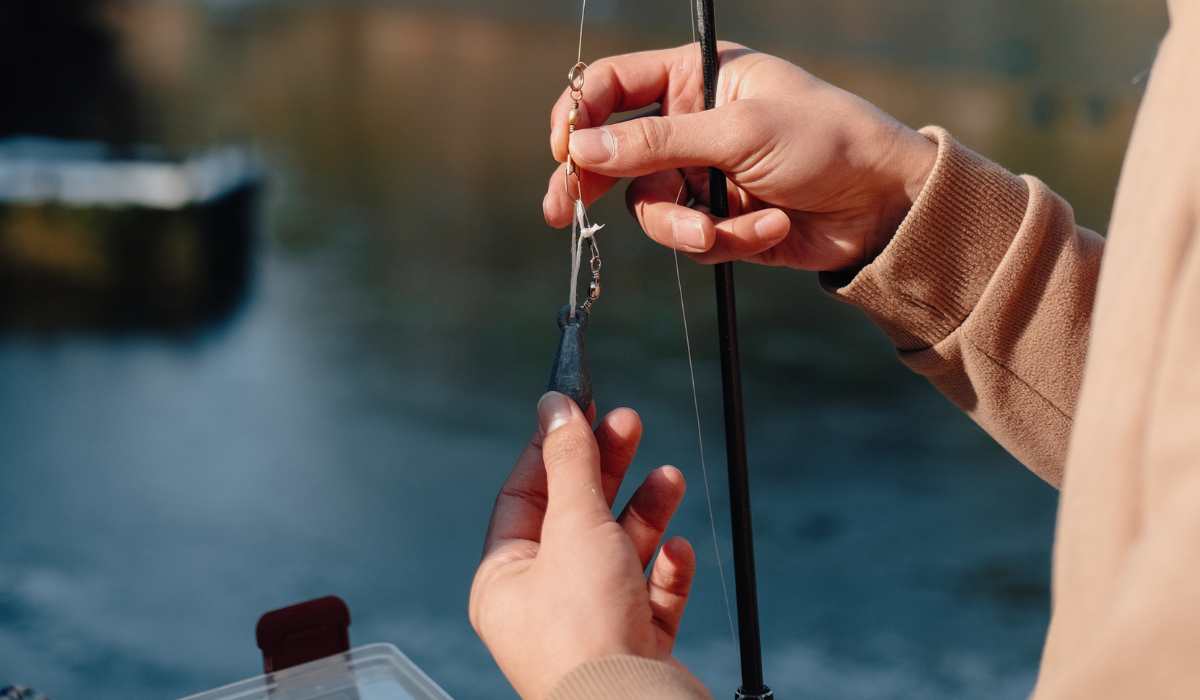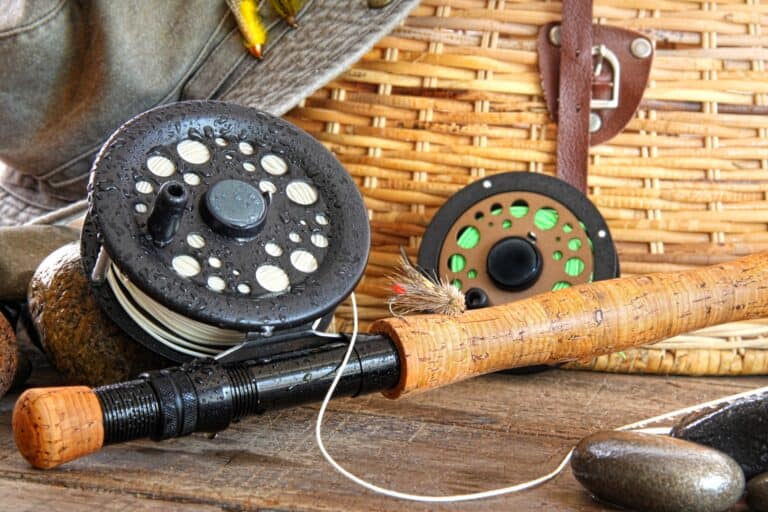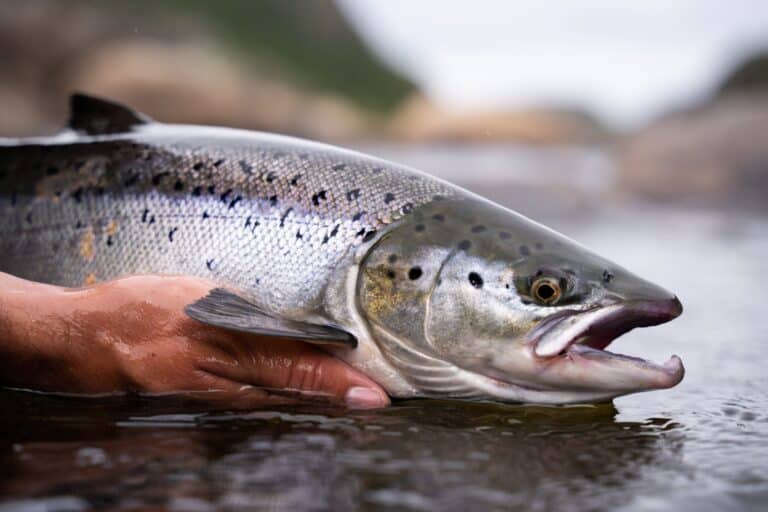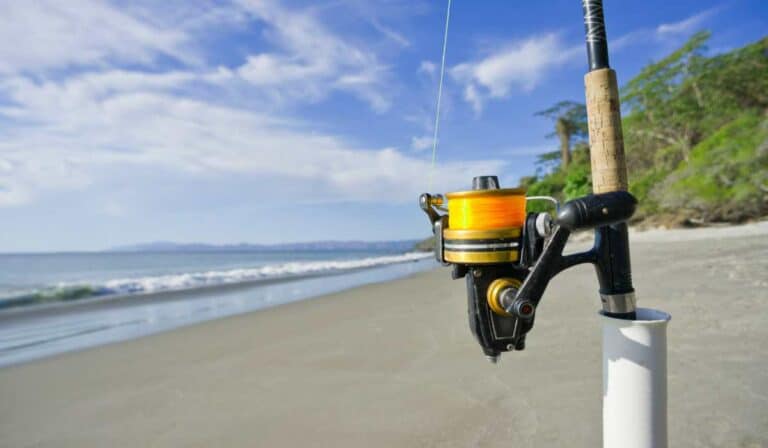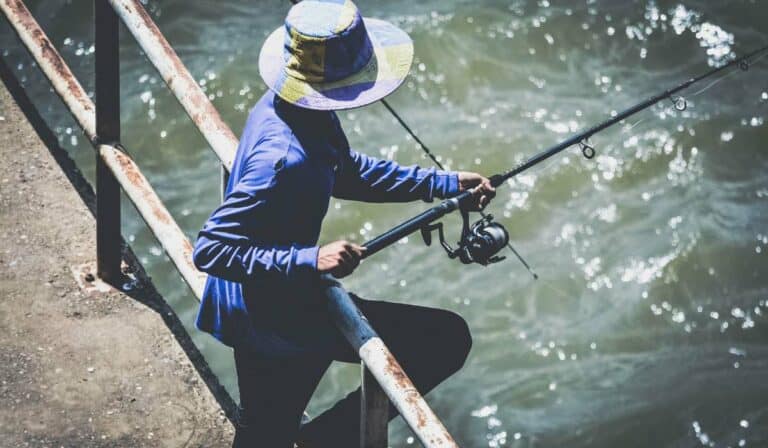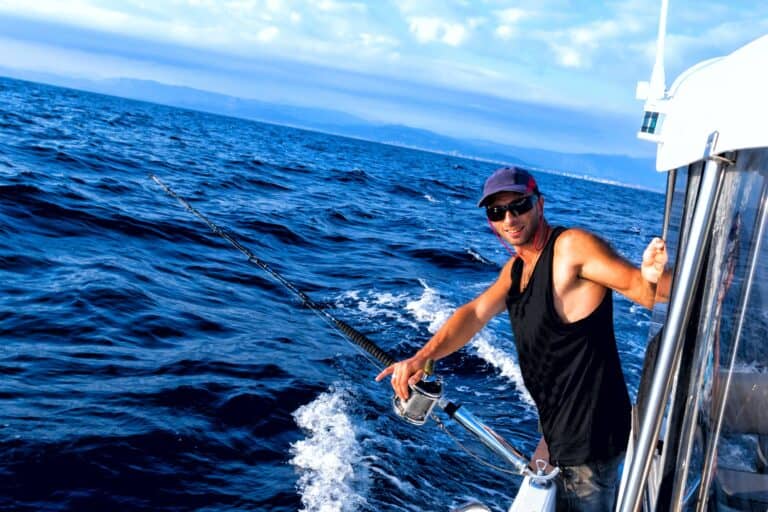The Best Bait for Deep Sea Fishing
Preparing for a deep sea fishing trip necessitates thoughtful planning, especially with regard to selecting the most effective bait. With countless options available in the market, making an informed decision can significantly impact your success rate.
In this blog post, we will delve into various aspects of choosing the right bait for your next adventure. We’ll discuss some of the most effective baits for targeting specific fish species in saltwater environments and explore both live bait options as well as artificial lures that have proven successful among seasoned anglers.
Furthermore, you’ll learn valuable tips on how to use these baits effectively while avoiding common mistakes that could hinder your chances of reeling in a prized catch. By equipping yourself with knowledge of which baits to use in different scenarios, you can optimize your deep sea fishing excursions.
Table of Contents
1. Choosing the Right Bait for Deep Sea Fishing
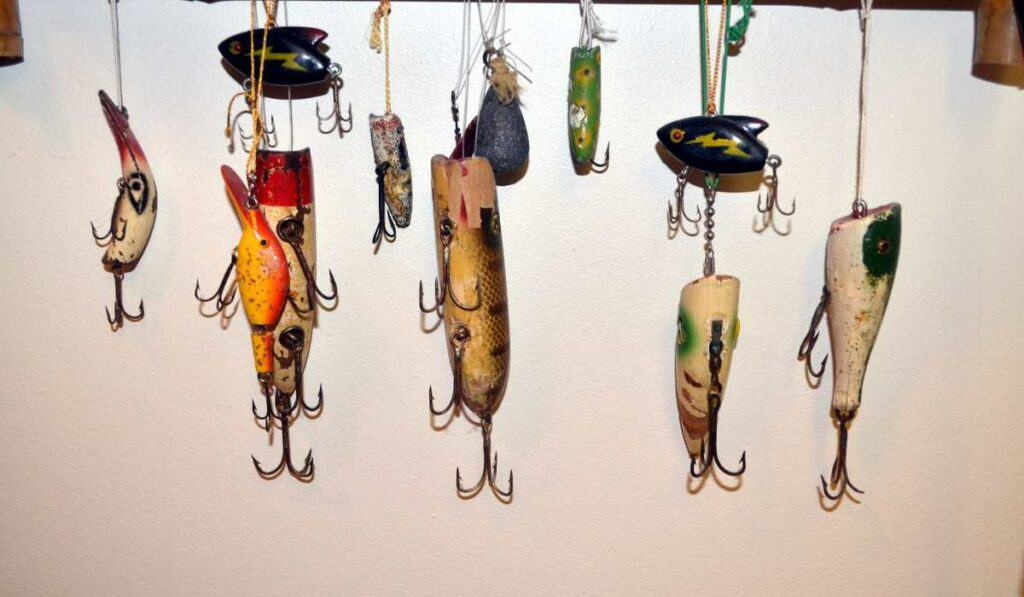
Embarking on a deep-sea fishing trip is an exciting experience, but to ensure success, it’s essential to choose the right bait. Different saltwater fish species are attracted to different types of bait, so understanding which baits work best and when to use them can make all the difference in your catch.
Fish Species and Preferred Baits:
- Tuna: Live or cut mackerel, squid
- Dolphinfish (Mahi-Mahi): Ballyhoo, live shrimp
- Sailfish: Goggle eyes, mullet
- Marlin: Mackerel, bonito strips
- Grouper: Squid, pinfish
- Snapper: Shrimp, sardines
To select the perfect bait for your target fish species, consider factors such as water depth, temperature, and local conditions. For example, some baits may be more effective at certain times of the day or during specific seasons. It’s also important to take into account whether you’ll be using live bait, artificial lures, or natural baits like worms and cut pieces of fish. Each type has its own advantages and drawbacks, so experimenting with various options can help you determine what works best for your particular situation.
In addition to selecting the appropriate bait type, consider how you present it while deep-sea fishing. This includes proper rigging techniques to maximize movement and appeal to your target fish. By understanding the preferences of the species you’re targeting and using bait effectively, you’ll increase your chances of catching fish on your deep-sea fishing trip.
Selecting the correct lure for deep sea angling can be a challenging endeavor, yet with some exploration and experience it is conceivable to pick the best one for your necessities. Next, we’ll discuss what types of baits are most effective when targeting different species in deeper waters.
Click here to read about Best Hiking Shoes for Wide Feet
2. Best Baits for Deep Sea Fishing
The top baits used by experienced anglers include live bait, artificial lures, and natural baits. To maximize success, it’s important to understand the strengths and weaknesses of each type of bait.
Live Bait
Live bait is often considered the most effective option for deep-sea fishing because it closely mimics the prey that fish are naturally attracted to. Popular live bait choices for deep-sea fishing include squid, shrimp, mackerel, and small fish such as sardines or pilchards.
Artificial Lures
If you prefer not to deal with live bait or want something more durable during long fishing trips, artificial lures are a great alternative. These synthetic options mimic the appearance and movement of real prey but require less maintenance than their living counterparts. Jigs, spoons, plugs – there’s a wide range available.
Natural Baits
Last but not least is natural baits, which consist of organic materials such as worms or cut-up pieces of larger fish (cut bait). While they may lack some appeal compared to live bait, they can still be highly effective in attracting deep-sea fish.
Now it’s time to explore further and discover how best to utilize each of these optimal baits for deep-sea fishing. When fishing in deeper water, it’s important to consider the target species and their natural prey. For example, shrimp is a popular bait for attracting speckled trout, while king mackerel are more likely to be caught with a vertical jigging technique using a jig head. Bottom fishing with cut bait is also a great way to catch a variety of game fish.
When using artificial lures, it’s important to choose the right type and color for the fish species you’re targeting. Topwater lures are great for attracting aggressive predator fish, while black lures are popular among saltwater anglers for their ability to attract a wide range of fish species. A steady retrieve is often effective, but don’t be afraid to experiment with different techniques to find what works best in your specific saltwater environment.
Whether you choose live bait, artificial lures, or natural bait, the key to success is to attract fish to your line. Understanding the habits and preferences of your target species is essential in selecting the right bait and technique. With these fishing tips in mind, you’ll be well on your way to a successful deep-sea fishing trip. Happy fishing.
Gaining knowledge of the diverse lures suitable for deep-sea angling can assist in making informed decisions and up your odds of success. Live baits offer a unique set of advantages that may be beneficial when targeting certain species, so let’s explore those options next.
3. Live Bait Options for Deep Sea Fishing
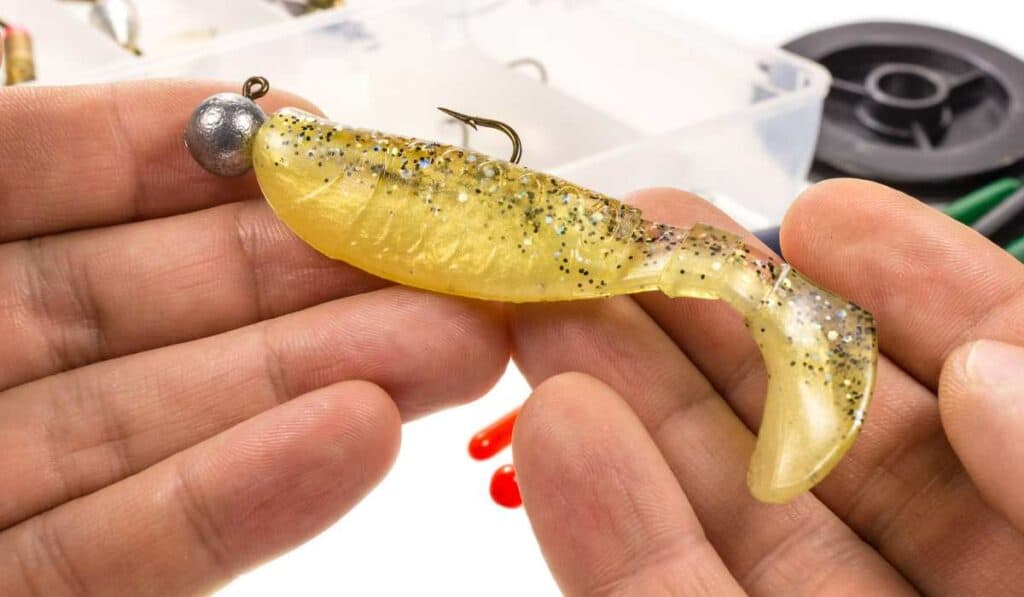
If you’re planning a deep-sea fishing trip, using live bait can significantly increase your chances of catching saltwater fish. There are several types of live bait that work well in attracting various fish species found in the depths of the ocean. Here’s a list of some popular options:
- Squid: Known to be irresistible to many predatory fish, squid is an excellent choice for deep-sea fishing. You can find them at most bait shops or catch them yourself using a squid jig.
- Shrimp: Shrimp make great all-around bait as they appeal to numerous fish species like snapper and grouper. Ensure that you keep them alive by storing them in aerated water.
- Mackerel: Mackerel is another versatile option when it comes to live baits due to their oily scent which attracts predators such as tuna and marlin.
- Pinfish: Pinfish are small but hardy baits ideal for targeting larger game fish like amberjack and cobia.
- Eels: Eels have proven effective against elusive targets such as mahi-mahi and wahoo thanks to their enticing swimming motion.
Selecting the right type of live bait depends on factors such as local availability, targeted fish species, and personal preferences. It’s essential to always use fresh, lively specimens since this will attract more attention from hungry predators lurking below the surface.
In addition to choosing the best live bait option, proper rigging is crucial for success. Check out our guide on live bait rigging techniques to ensure you’re maximizing your chances of landing that trophy catch.
Live bait can be a great way to draw in different kinds of fish when fishing in the deep sea, making it an advantageous choice. However, artificial lures are also an effective way to target specific types of fish in the depths below.
Click here to read about Best Halibut Bait: Tips for Successful Halibut Fishing
4. Artificial Lures for Deep Sea Fishing
Fishing enthusiasts know that using the right artificial lure can make all the difference when deep-sea fishing. These lures are designed to mimic the appearance and movement of live bait, attracting various species of fish in deeper waters. Here are some top choices for artificial lures to use on your next deep-sea fishing trip:
- Jigs: Jigs are versatile and effective lures that come in various shapes, sizes, and colors. They’re perfect for targeting bottom-dwelling fish like grouper or snapper as they sink quickly into deeper water columns. Check out this guide on jigging techniques to learn how to effectively use jigs while deep-sea fishing.
- Spoons: Spoons have a curved shape that creates an enticing wobble action when retrieved through the water column, making them ideal for attracting pelagic predators such as tuna or kingfish. Learn more about selecting the right spoon size and color by reading this article on spoon-feeding techniques.
- Plugs: Plugs (also known as crankbaits) imitate small baitfish with their lifelike swimming action, making them irresistible to larger predatory fish like marlin or sailfish. Discover tips on choosing plugs based on diving depth and trolling speed from this informative piece about trolling plug lures.
When selecting artificial lures for deep sea fishing, consider factors such as target species, water depth, and current conditions. Experimenting with different lure types and retrieval techniques will help you find the perfect combination to catch saltwater fish like a pro.
Artificial lures are a great option for deep-sea fishing as they can be used in any condition and provide an exciting experience. Natural baits necessitate more dexterity but can bring higher rewards when it comes to hooking bigger fish.
5. Natural Baits for Deep Sea Fishing
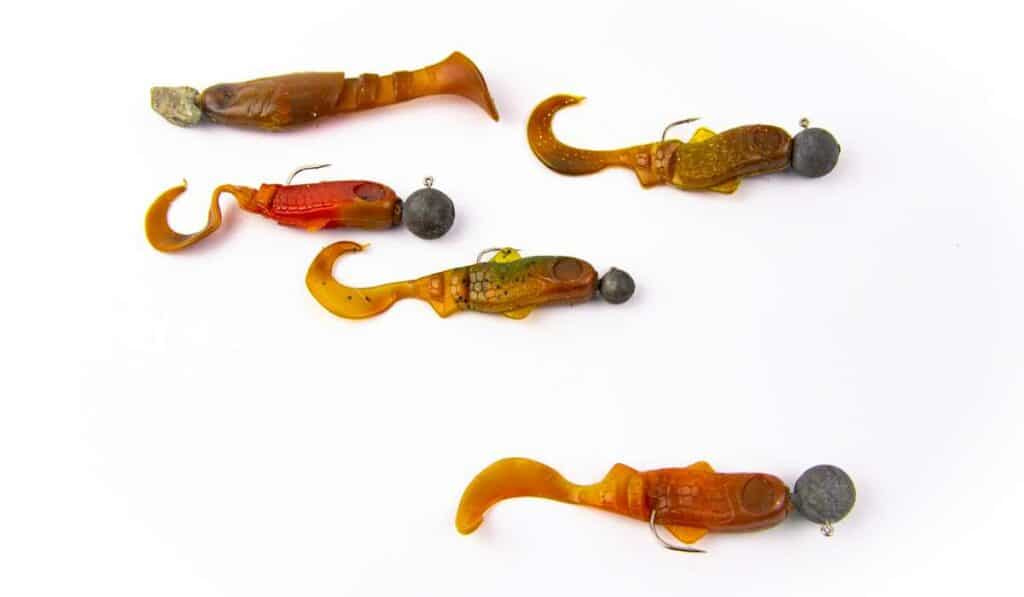
When it comes to deep sea fishing, using natural baits can be highly effective as they mimic the prey that target species are used to feeding on. Here are some of the most popular and successful natural baits to use during your next deep-sea fishing trip:
- Worms: A classic bait choice, worms such as bloodworms or sandworms can attract a variety of saltwater fish species in deeper waters. They release a scent trail that entices fish from afar and their wriggling motion is irresistible to many predators.
- Cut Bait: Using chunks of cut bait like mackerel, herring, or bonito is another great option for deep-sea fishing. The oily flesh releases an enticing scent into the water column which draws in hungry game fish.
- Ballyhoo: These small baitfish are commonly used by saltwater anglers targeting pelagic species like tuna and marlin due to its lifelike swimming action when rigged properly. Check out this guide on how to rig ballyhoo effectively: Rigging Ballyhoo.
In addition to these options, don’t forget about using local baitfish found near your chosen fishing grounds. Many times you’ll find success using what’s naturally available in the area because it’s already part of the predator’s diet.
To ensure you’re presenting your natural baits correctly while deep sea fishing, consider factors such as depth control (using weights), hook size/type (Types of Hooks), and proper rigging techniques. Remember, the more natural your bait appears in the water, the better your chances are at attracting a hungry game fish.
Utilizing natural bait for deep-sea fishing is an effective method to attract larger fish while being environmentally conscious. To maximize your odds of a successful deep sea fishing trip, it is essential to comprehend the proper utilization of bait.
Click here to read about Ultimate Guide To Fishing For Sheepshead
6. Tips for Using Bait When Deep Sea Fishing
Here are some tips that will help you make the most out of your deep-sea fishing adventure:
- Choose the right bait: As mentioned earlier, selecting the appropriate bait is crucial for a successful catch. Be sure to research which baits work best for your target species and location. You can also consult local fishermen or check online forums like The Hull Truth.
- Presentation matters: Make sure your live bait appears natural and lively in the water by hooking them properly. For artificial lures, mimic their movement patterns accurately so they appear more enticing.
- Bait depth is key: Different fish species prefer different depths; therefore, adjust your bait accordingly using weights or downriggers if necessary.
- Maintain freshness: Keep live baits fresh by storing them in aerated containers with clean seawater while on board.
- Trial and error approach: If one type of bait isn’t working well, don’t hesitate to switch things up. Experiment with various types until you find what works best for you.
In addition to these tips, consider investing in quality gear such as rods, reels, lines, and tackle. High-quality equipment will not only improve your overall fishing experience but also increase your chances of landing a big catch. Check out websites like SunWaterDirt.com for recommendations on top-notch fishing gear. Happy fishing.
By adhering to the advice in this article, you can maximize your success when deep sea fishing. Nonetheless, it is wise to recognize common errors when utilizing bait for deep sea fishing so as not to impede your own efforts.
7. Common Mistakes When Using Bait for Deep Sea Fishing
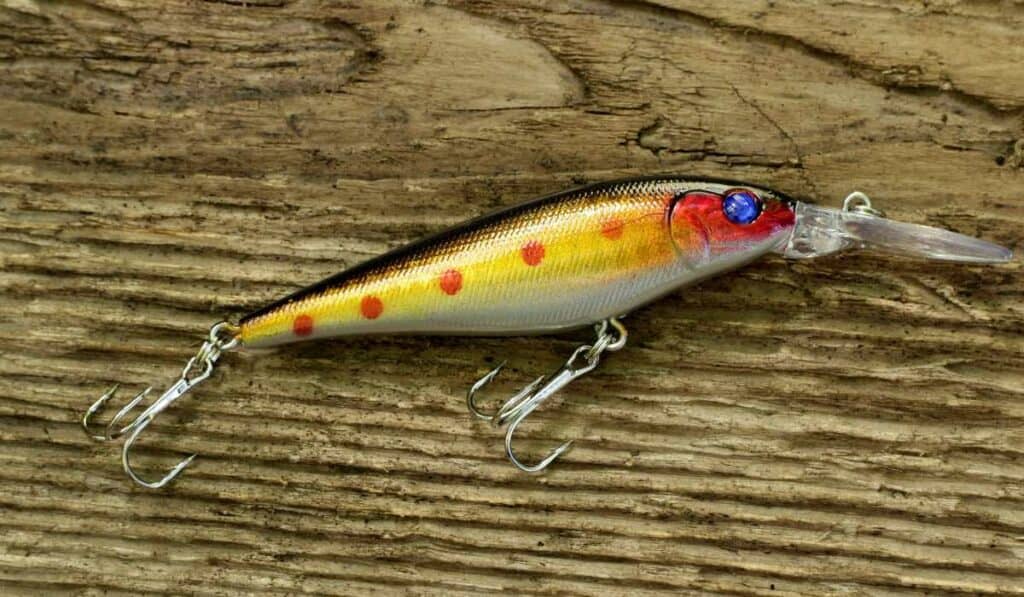
However, many anglers make common mistakes that can hinder their chances of catching fish. In this section, we’ll identify the common mistakes made by anglers and provide advice on how to avoid them.
Not Changing Baits Regularly
One mistake anglers often make is sticking with the same bait throughout their entire trip. Frequent changes in bait can be beneficial for keeping fish interested, so it’s important to vary your lure selection throughout the course of a fishing trip.
Poor Storage and Handling of Live Bait
Maintaining the health and vitality of live bait is crucial for attracting fish. Be sure to store live bait in an appropriate container with adequate water circulation and oxygenation. Additionally, handle live bait gently when hooking it onto your line; rough handling can stress or injure the creature, making it less appealing to predators.
Inappropriate Hook Size or Rigging Technique
Selecting the correct hook size and rigging technique for your chosen bait is vital for successful deep sea fishing trips. A hook that’s too large may deter fish from biting while one that’s too small might not secure a strong hold on larger species like tuna or marlin. Deep drop rigging techniques, such as bridling live baits or using circle hooks instead of J-hooks, are also important considerations depending on the target species.
Failing to Adapt to Conditions
Finally, remember that deep sea fishing conditions can change rapidly. Be prepared to adjust your bait choice and presentation based on factors like water temperature, current, and the presence of other marine life.
Using the right bait is essential for catching a variety of saltwater fish species. While artificial lures like topwater lures and saltwater lures can be effective, natural baits like live bait and cut bait are often the best options for attracting fish in deeper water. Shrimp, squid, and small fish are popular natural baits that can attract a wide range of predator fish.
When bottom fishing, using cut bait like squid or mullet can be effective for attracting smaller fish like snapper and grouper. For larger game fish like king mackerel, vertical jigging with a jig head and steady retrieve can be a successful technique. Black lures are also popular among saltwater anglers for attracting aggressive fish like speckled trout.
Overall, the key to successful deep sea fishing is to understand the natural prey and target species in the saltwater environment and to adapt your bait and presentation accordingly. By avoiding common mistakes and using the right bait and techniques, you can increase your chances of catching a variety of saltwater fish on your next deep sea fishing trip.
Click here to read about Best Halibut Bait: Tips for Successful Halibut Fishing
FAQs Best Bait for Deep Sea Fishing
What is the best cut bait for deep-sea fishing?
The best cut bait for deep-sea fishing depends on the target species, but a popular choice is squid. Squid is versatile, readily available, and attracts various game fish like tuna, marlin, and swordfish. Other effective options include mackerel, bonito chunks or fillets.
What is the most effective fish bait?
Live baits are often considered the most effective in attracting fish. Some top choices include pilchards (sardines), herring, mullet, ballyhoo or live shrimp. The key to success with live bait is selecting healthy specimens that mimic natural prey behavior when presented to predatory game fish.
What is the best bait for deep-sea fishing in the Gulf of Mexico?
In the Gulf of Mexico, some of the best baits for deep sea fishing include cigar minnows (for king mackerel), blue runners (for amberjack), pinfish (for grouper) and squid or Spanish sardines (for snapper). It’s essential to match your chosen bait with local conditions and target species preferences.
Conclusion
Whether you’re targeting saltwater fish or freshwater fish, using the best bait can help you attract the right species and increase your chances of success. In this article, we’ll explore some of the best bait options for deep sea fishing and provide some tips for selecting the right bait for your next fishing trip.
Live Bait Options
Live bait is a popular choice among saltwater anglers, as it can be very effective at attracting predator fish. Some of the most popular live bait options for deep sea fishing include:
- Shrimp
- Small fish
When using live bait, it’s important to keep it alive and healthy for as long as possible. This can be achieved by keeping the bait in a well-aerated bait bucket and changing the water frequently. It’s also important to use the right size hook for your bait, as using a hook that is too large or too small can reduce your chances of catching fish.
Artificial Lures
If you prefer to use artificial lures for deep sea fishing, there are many options to choose from. Some of the most popular types of artificial lures for saltwater fishing include:
- Topwater lures
- Jig heads
Topwater lures are designed to mimic the movement of natural prey on the water’s surface, making them a great choice for attracting a wide range of game fish. Jig heads, on the other hand, are designed to be used with soft plastic baits and are often used for bottom fishing or vertical jigging.
Cut Bait
Cut bait is another popular option for deep sea fishing, particularly when targeting larger game fish. Cut bait can be made from a variety of different fish species and is often used to attract predator fish like king mackerel. When using cut bait, it’s important to use a sharp hook and to keep the bait moving to attract fish.
Fishing Tips
Regardless of the type of bait you choose, there are some general tips that can help you catch more fish on your next deep sea fishing trip. Some of these tips include:
- Consider the target species and their natural prey
- Pay attention to the saltwater environment and water conditions
- Use a steady retrieve when using artificial lures
- Experiment with different types of bait and fishing techniques
By following these tips and using the right bait for the job, you can increase your chances of catching a variety of different fish species on your next deep sea fishing trip.

